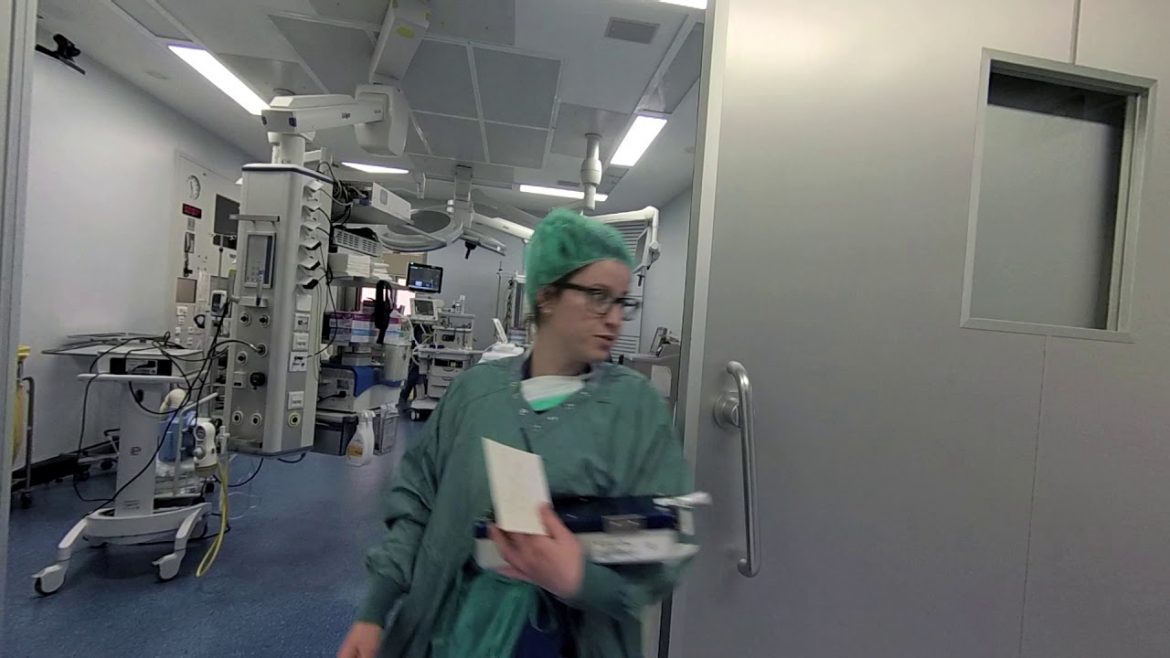[dropcap letter=”B”]
arcelona’s Vall d’Hebron University Hospital and Telefónica have taken a new step to improve patient safety and the efficiency of operating flows in the Surgery Bloc by implementing an innovative patient traceability system. Guaranteeing precise location of patients within the surgery area is essential to prevent errors and to optimize surgical activity.
When a patient is admitted to the surgery area, a hospital porter fits them with a bracelet with a tag allowing them to be identified throughout the surgical procedure. The system detects that the patient is in transit within the surgery area and a set of beacons distributed throughout the block allows detection of location in real time. Thus, from the moment the patient enters the Surgery Block until they leave, all their movements are recorded automatically.
The system sends information on the patient’s whereabouts to all the screens distributed around the surgery area: “In preparation,” “In surgery,” “Recovery” or “In recovery, ready to leave.” In addition, a colour code accompanies this written information and allows the patient’s route to be followed easily.
Movements within the Surgery Bloc are always displayed in green on the screen, while if the patient is leaving the block, this is displayed in blue. When the information appears in yellow or red, the patient is in surgery. When they are in the Pre- and Post-Anesthetic Recovery Unit (URPA) waiting to enter the operating theatre, the information appears on a red background. When the patient has returned from the operating theatre and is recovering in the URPA, the information comes out on a yellow background.
A PIONEERING SYSTEM IN SPAIN
Dr. Vicenç Martínez Ibáñez, the Manager of the Vall d’Hebron University Hospital, and Kim Faura, the General Manager of Telefónica in Catalonia, visited the Surgery Block this morning to see the operation of the new traceability system on site. Dr. Vicenç Martínez emphasized that “we are very pleased with this high-tech system that is the culmination of the transformation of the Surgery Bloc and that allows us to improve patient monitoring.” For his part, Kim Faura expressed his satisfaction with this technological collaboration, emphasizing that “one of the priority objectives of Telefónica is to use technology to improve the lives of people. That the medical teams can devote themselves fully to their work without having to worry about anything else will undoubtedly improve not only the work flow in the surgery block, but also very relevantly, patient care. This is a key role of technology and great value for the Company.”
This automated traceability system is the first to be implemented in a Spanish hospital. To develop this pioneering project, Telefónica has enjoyed the collaboration of MySphere, a firm specializing in e-health solutions.
APP FOR PATIENTS
The new traceability system is connected to Vall d’Hebron app, which is a mobile application that can be downloaded by patients and those accompanying them, and automatically records and sends information on patient movements. The new system also sends this information to the screens of waiting rooms for those accompanying, but coded to guarantee anonymity of the patients. Thus, friends and relatives know at all times where is the patients are and where they are headed.
Dr. Juan Antonio Hueto, the Director of Surgical Services , stated that “knowing the location of the patient automatically allows their route through the area to be much more secure, as it eliminates the possibility of human error in the transfer from one place to another.” In addition, thanks to the digitalization of all the information recorded by the system, “we can analyze the patient flows within the block to optimize the management of the operating theatres,” he added.
The patient traceability system improves communication between all those involved in the area of surgery, such as doctors, nurses and porters. They no longer need to enter the patients’ movements in the system.
In the second phase of system implementation, the traceability tag will also be used with for operating theatres and Surgery Block devices, such as ecographs or defibrillators, for example. Thus, comments Dr. Hueto, “the tracking flow within the block is closed. This will allow us to quickly find a device when we need it and, in this way, professionals can dedicate their time to other tasks.”



















